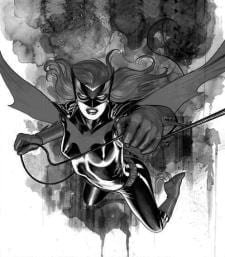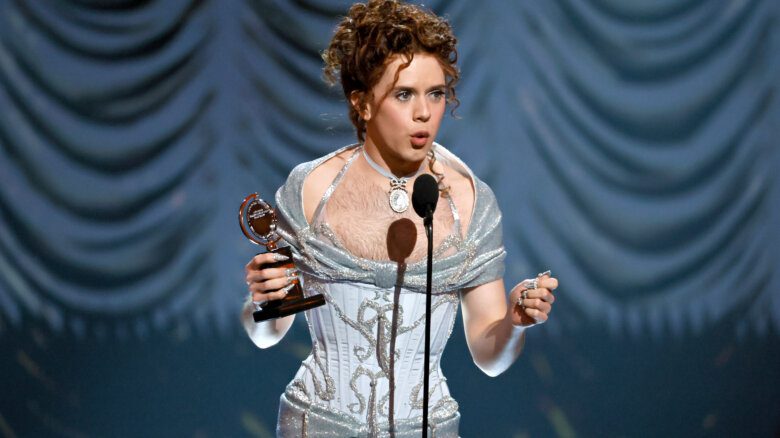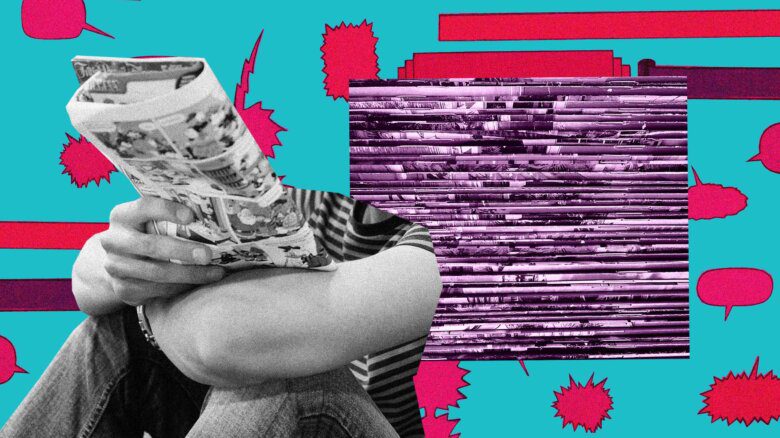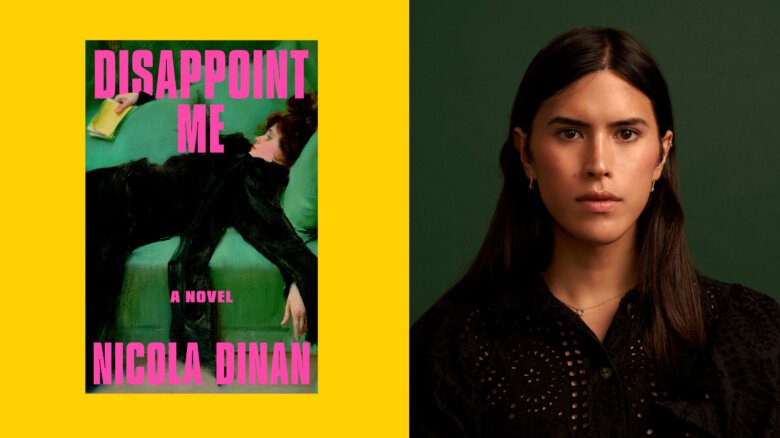The 1950s were a weird time: Too early for the superhero boom of the 1960s, comic books of the day were under attack for what was considered to be rampant displays of subversive imagery. Even then people questioned the nature of a relationship between a billionaire playboy and his boy ward as they fought crime as Batman and Robin. To help silence any doubts as to the nature of their relationship DC Comics brought us Kathy Kane, the intrepid Batwoman, and her niece Bette, the first in a series of Batgirls.
Despite beginnings as a none-too-subtle beard, Batwoman displayed a range of subversion all her own, echoing fledgling feminism in the pages of boys’ adventure fantasies. Batwoman was portrayed as an equal to Batman, at least as much as possible for the time period. Best remembered for a bright yellow and red costume, her range of bat-gadgets based on popular women’s accessories, complete with a utility purse to store them, Batwoman nevertheless foiled numerous crimes all on her own, often before Batman could arrive to aid. Sadly Batwoman’s appeal wasn’t lasting and she eventually faded to obscurity, celebrated by only the most hard-core of minutiae-dwelling fandom. No one ever expected a comeback.
Information about a new lesbian version leaked to the New York Times kicked off a typhoon of articles. “The New York Times ran with this article and used this exceptionally loaded phrase to describe Kate [Batwoman] as a buxom lipstick lesbian,” says Batwoman writer Greg Rucka. “Within 24 hours that line, which was penned by the reporter, ended up as a quote coming out of [DC editor-in-chief] Dan Didio’s mouth.
“Eight months later Dan turned to me and said, ‘I didn’t know what a lipstick lesbian was!’ And yet people were blaming him for saying it. And you know the plan had not been initially to do anything with Batwoman yet, but then all the media stuff hit and it was like, ‘Okay, how are we going to get her in?’”
From the beginning Batwoman was planned as queer. “With Kate,” says Rucka, “that was an administrative decision from on high, there was a choice made: You know, the time has come. We’re gonna take arguably the most recognizable symbol that we have — that’s the bat — and we’re going to associate it with a character that from the start is going to be known as gay. It’s not going to be an after-school special story, we’re not going to do a pull back the curtain and duh-duh-duh, it’s from the word go. What we want is a new member of the bat family: We want this character to be female, viable and strong and among all those things she is also gay. And that is part of the character-making, right, as opposed to an evolving self-discovery story.”
Fan expectations for the new character have been near boiling, but her appearances have been kept brief and few, building the demand to see Batwoman in a story all her own. “The fact of the matter is, the cat went not only out of the bag, it went up on the roof and started yowling before there was even a plan. The Times ran the piece before the series had been approved, there weren’t even scripts.” Rucka and DC were now faced with the challenge of making a Batwoman live up to the hype, both positive and negative.
What makes the new-and-improved Kate Kane an equal to Batman — not as another Batgirl but as a Batwoman? “For lack of a better phrase she’s looking for a way to serve and has been denied it elsewhere,” says Rucka. “One of the things that becomes clear in the run, one of the differentiators that JH Williams III [who’s the artist on the book] and I really want with Kate, is that she couldn’t be Batman with breasts, she had to be a different take on the character.
“Batman is a demon, he’s a gargoyle. And I wanted Kate to be more seductive and consequently I would think more likely to take people by surprise. Batman’s agenda is a fear agenda, where his main tool is ‘Boo!’ They turn around and there’s a guy and he looks like a giant fucking bat.
“Their reaction to Kate is, yes, surprise and alarm, fear. But the way I see it is she’s more like a succubus when she wants information. She will coax it out of you, tease it out of you…. It doesn’t make her any less viable or frankly any less dangerous than Batman. In fact if you go back and look at the fight scenes that have been released, every time I have written her in a fight, I have tried to make her even more brutally efficient than Batman. Batman tends to punch people in jaws, Kate breaks elbows, she goes for joints, she takes you down really quick. When she throws that switch she doesn’t mess around.
“The big quote that came out of the New York [comics convention] was, ‘Yes, she’s a lesbian; she’s also a redhead,’” says Rucka, “and I kind of feel that way about it. I don’t mean to diminish the queer experience, especially in America, anymore than I’d want to deny the African-American experience. I don’t want to sugarcoat anything. So I guess the baseline for me is that you always want to be true to the characters, to the person — and people are different.”
Batwoman is the highest profile queer character in mainstream, genre fiction ever. As a lesbian, she’s possibly an easier sell to the still mainly straight, white, male comic readers. “If I have to PT Barnum you a bit to get you into the tent then it might be worth it. But then the flip side is if somebody is going to open up these pages hoping for some hot girl-on-girl action then they will be sorely disappointed.”
Batwoman’s run in DC’s flagship title Detective Comics begins Wed, Jun 10 with issue 854.

 Why you can trust Xtra
Why you can trust Xtra


